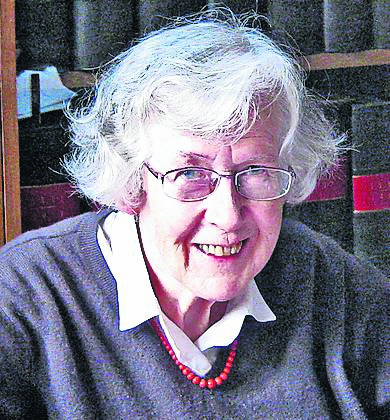
Barbara Harvey’s talent for bringing seemingly dry medieval records to life made her the ideal person to chronicle the history of the pre-Reformation monks of Westminster Abbey.
In her study Living and Dying in England, 1100-1540: The Monastic Experience, for which she was jointly awarded the Wolfson prize for 1993, she brought her forensic skills to bear on the monks’ everyday lives, examining their charitable giving, the illnesses they suffered and, above all, their diet. In a remarkable finding she showed that the monks were entitled to meals with a daily intake of 7,375 calories, or nearly three times the requirement of an active male today. Lunch alone could include nearly 3lb of meat which, Harvey mused, was a testimony “to that love of meat for which Englishmen have been famous over much of their history”. Furthermore, desserts included “Principal Pudding” — similar to spotted dick but containing at least 8kg of suet — and meals would be washed down with a daily drink allowance of a gallon of ale.
To achieve the intake necessary to execute their normal everyday duties, the monks needed only 55 per cent of what they were given. The combination of their unhealthy diet and their equally unhealthy lifestyle, with its lack of exercise, Harvey showed, must have left them bloated and obese.
Small wonder in the circumstances that life expectancies were low. In the 15th century many monks died in their forties and few could hope to reach their sixties. While the 15th century was a period with a high incidence of plague, plague was not the only cause of death.
In an earlier study, published in 1977, Harvey had looked at the monks’ management of the estates which provided them with an income to match those enjoyed by the aristocracy. Although her concerns were principally with land tenures, villein labour obligations and the minutiae of life in the fields, she placed centre-stage the monks’ own understanding of their role as lords. As she wrote, the book represented “an attempt to capture the view of their estates that the monks had from Westminster over some five hundred years, and to weigh the consequences for their tenants of the thoughts provoked by it”. It was the deep humanity with which she approached her work and the evident sympathy that she had for the monks whose managerial decisions she was tracing that made her book so satisfying to read. One reviewer praised the work for allowing readers to see the abbot and monks of Westminster Abbey “as if they were characters in a Trollope novel”.
Harvey’s deep knowledge of the monks of Westminster and their lives led her in the 1980s to undertake a quite different project: the co-editing of the Abbey’s chronicle for the years 1381 to 1394. A uniquely well informed source for the reign of Richard II, a keen patron of the community, the chronicle was the work, Harvey showed, of a monk who had actually seen the king and had probably also met him. Among the insights afforded us is the extraordinary picture of the king walking barefoot in procession with the monks from the Tothill Gate to Charing Cross and from there down present-day Whitehall to the Abbey, where he then performed his devotions. Harvey’s suggestion was that the monk author was the prior, Richard Exeter.
Barbara Fitzgerald Harvey was born in 1928 at Teignmouth in Devon, to Richard Harvey and Anne (née Julian). She was educated at Teignmouth Grammar School and Bishop Blackall School for Girls in Exeter, before going up to Somerville College, Oxford, to read history in 1946. After graduating with a First in 1951, she briefly held lectureships at Edinburgh and Queen Mary, London, where one of her pupils was Roy Strong, before she returned to Somerville in 1955 for the remainder of her teaching career. She retired in 1993.
Harvey devoted the whole of her academic lifetime to the study of Westminster Abbey, its monks and its affairs. She first went to the abbey’s archives as a student in 1950, and her visits were to continue over a period of 60 years. She was the only person permitted to work in the muniment room itself, rather than in the adjacent library, and she was even allowed to remain at her seat in the lunch hour. In recognition of her scholarly achievement, she was awarded the St Edward’s Cross by the Dean, Dr John Hall, in 2013.
She was elected a Fellow of the British Academy in 1982 and in 1997 was appointed CBE for her work with the Oxford Dictionary of National Biography.
Harvey, who was unmarried, was a person of immense humanity, warm in her encouragement of younger scholars and generous in the time that she devoted to others. She was self-deprecating despite her achievements, and at Somerville she became a college institution. A committed Anglican, she was a regular member of the congregation at the University Church of St Mary the Virgin, Oxford.
Barbara Harvey CBE, medieval historian, was born on January 21, 1928. She died after a long illness on August 9, 2025, aged 97
